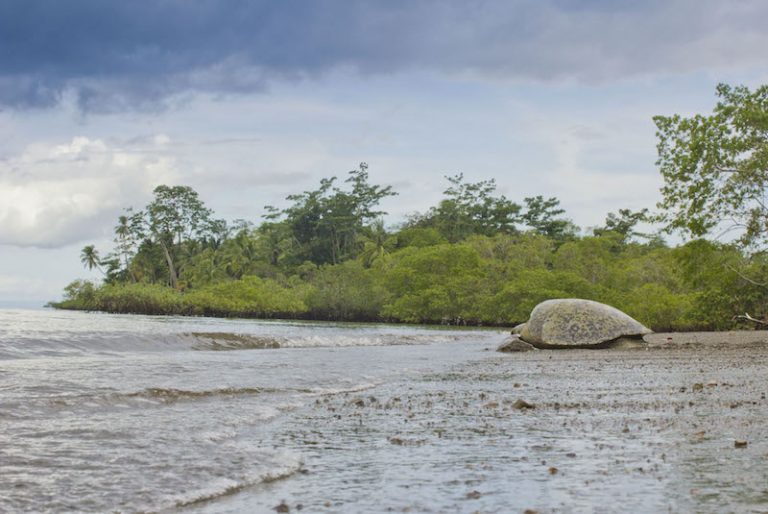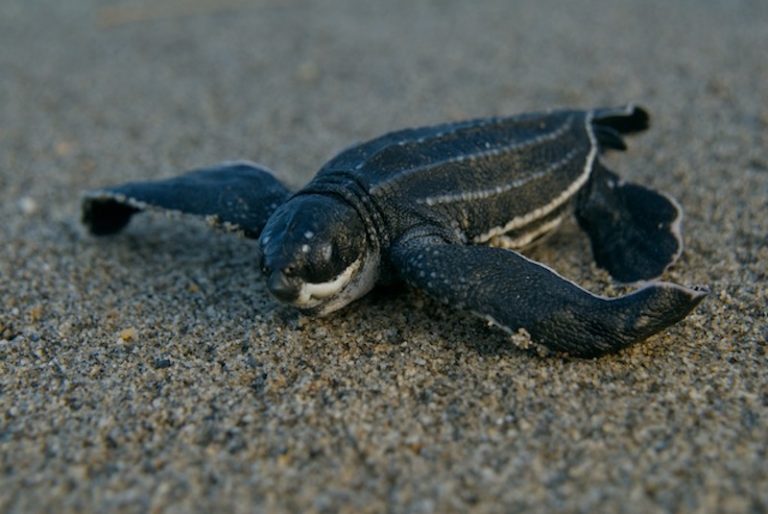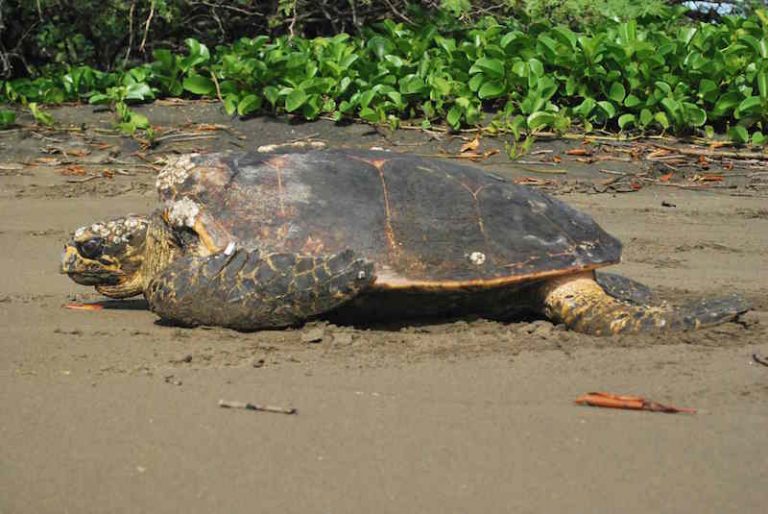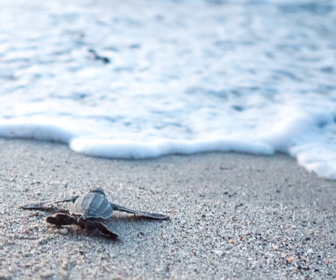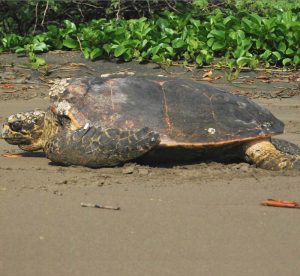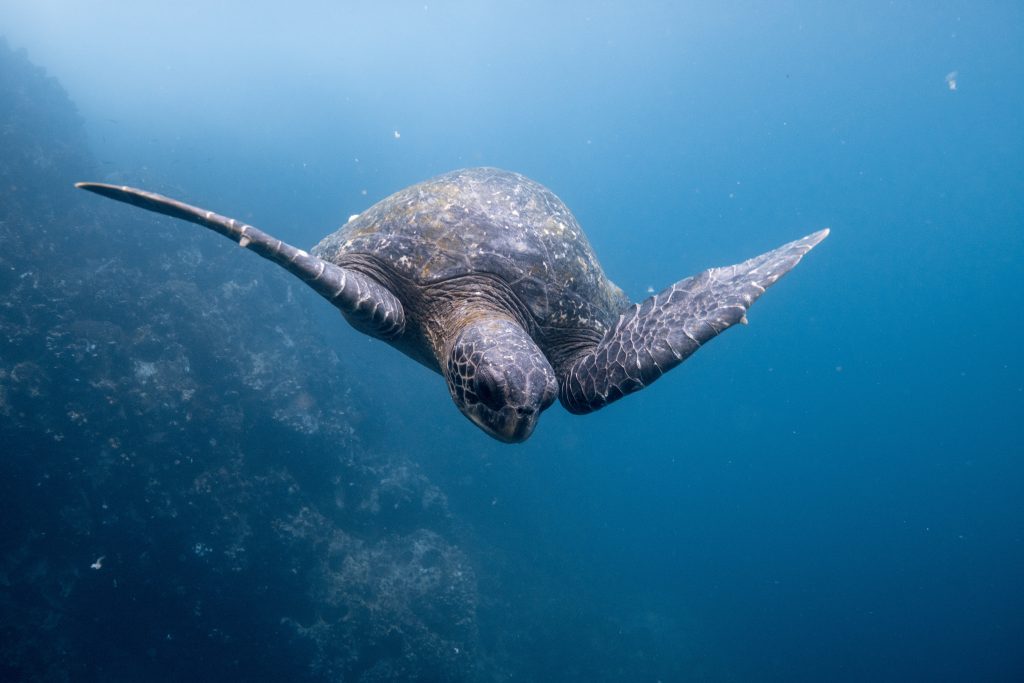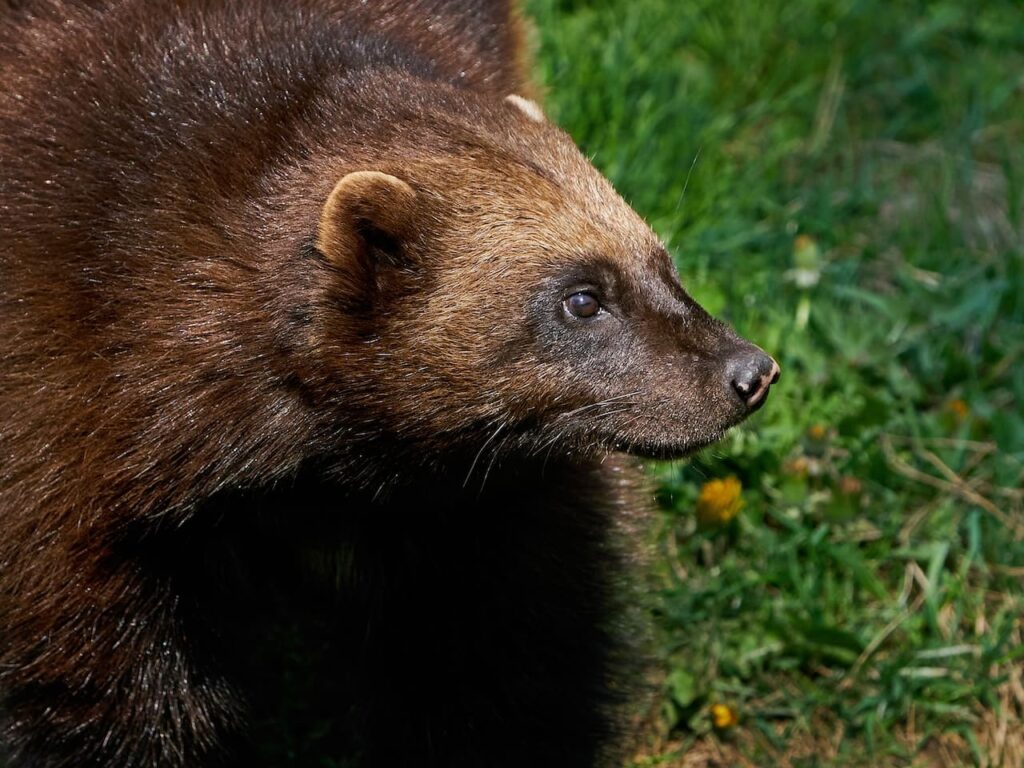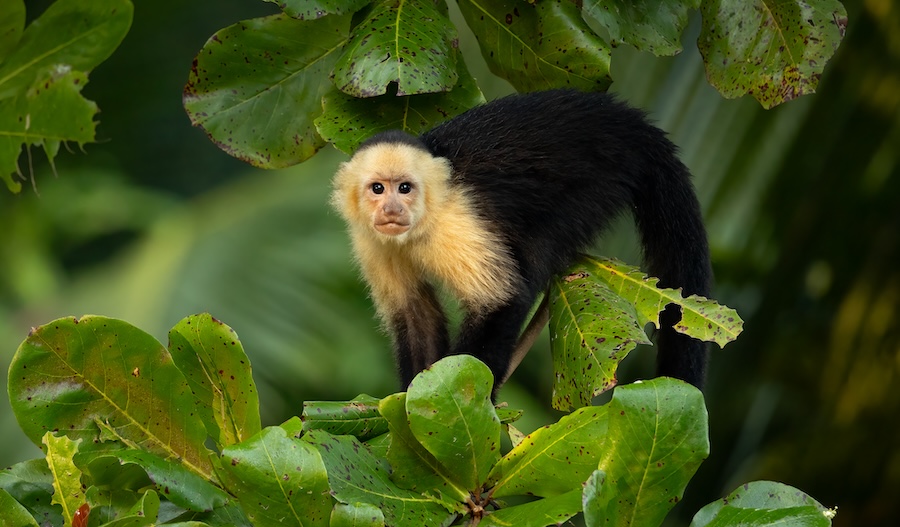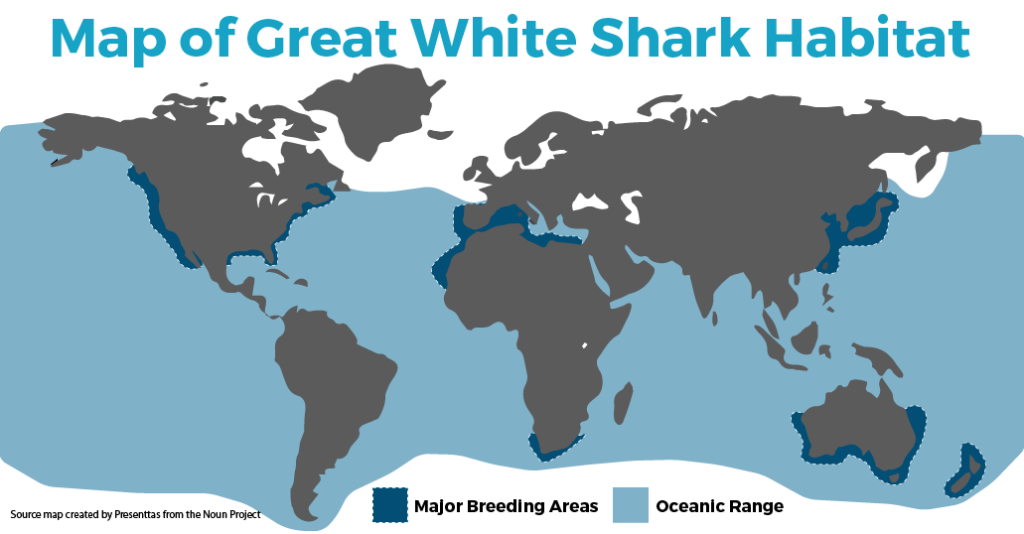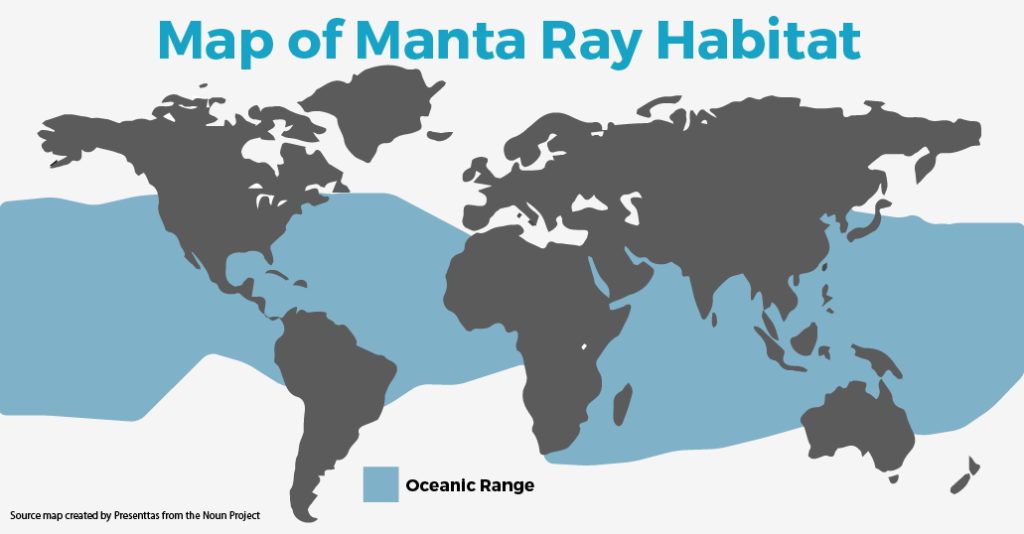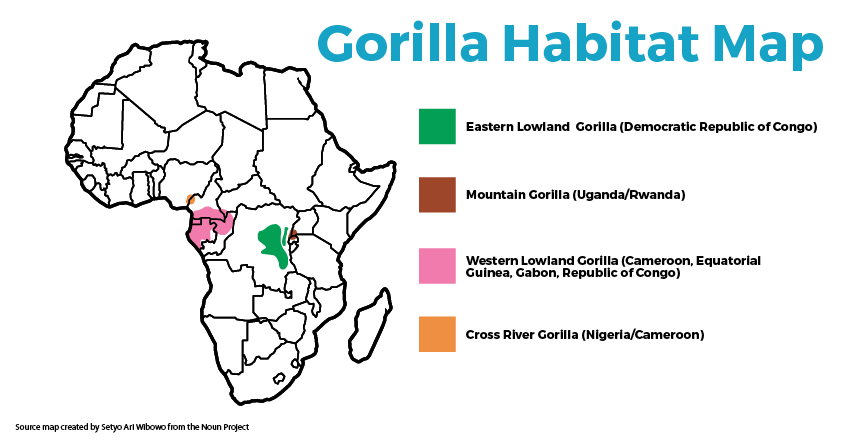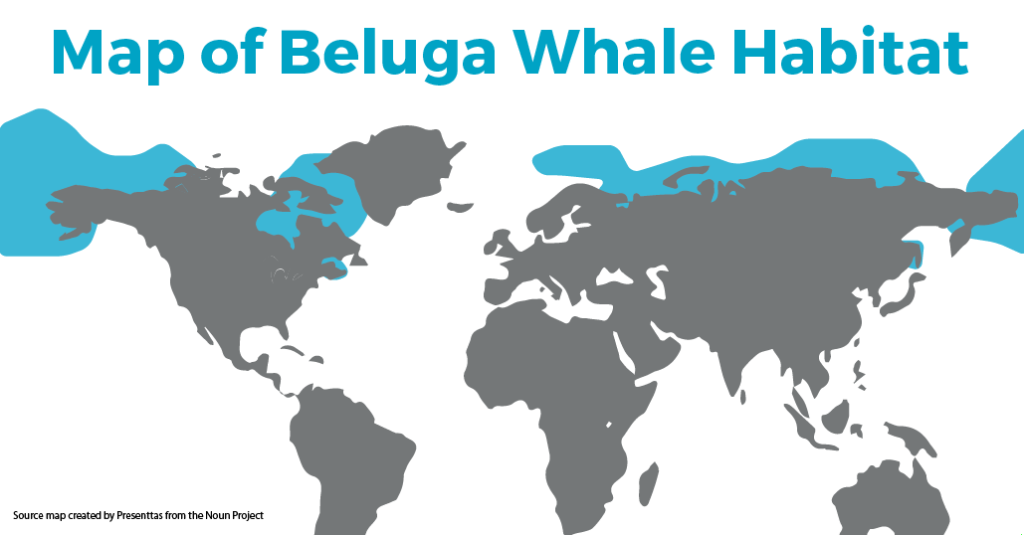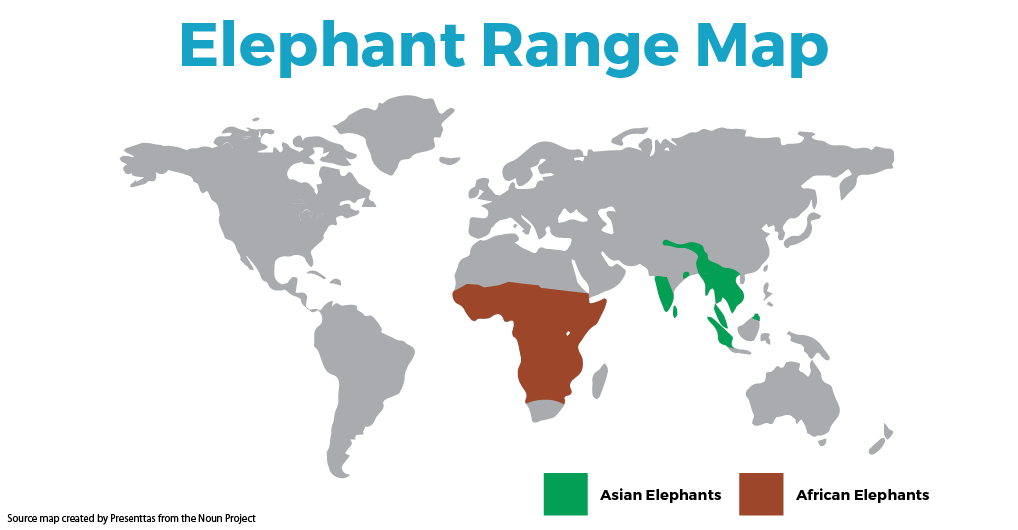Olive Ridley Sea Turtle Facts
More about Olive Ridley Sea Turtles
One of the smaller sea turtles, olive ridleys have one of the more fascinating nesting behaviors of any reptile. They can weigh up to about 100 lbs and can reach around 2 feet long.
These turtles nest in huge groups (as many as 100,000), coming ashore day and night for several days in an event known as an arribada (Spanish for ‘arrival’). Arribadas take place on just a few beaches around the world including Costa Rica, Mexico, and India.
Olive ridleys are the most common sea turtle in the world with likely more than a million adults. They are most known for their nesting behavior (known as an arribada) where tens of thousands of turtles come ashore at a time over a few days to lay their eggs. Only a few beaches in the world are home to the arribada and how the process works is not well-known.
Olive Ridley Facts & Tidbits
- These are the second smallest sea turtles, averaging 75 – 100 lbs. and up to 2 1/2 feet long.
- The Kemp’s ridley turtle is a close relative but lives only in the Gulf of Mexico.
- On most olive ridley nesting beaches, the turtles nest alone and not in large groups.
- This species eats a wide variety of foods including crustaceans, jellyfish, and fish.
Distribution
Olive ridleys inhabit primarily tropical oceans around the world, found in the Pacific, Atlantic, and Indian oceans. The arribada beaches are in Costa Rica (Ostional and Nancite), Mexico (Escobilla), Nicaragua (La Flor), and India (Gahirmatha).
Status
IUCN Status: Vulnerable / Population Trend: Decreasing
Their primary threats are coastal development, consumption of their eggs, and entanglement in fishing gear.


